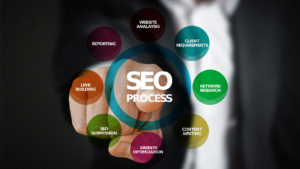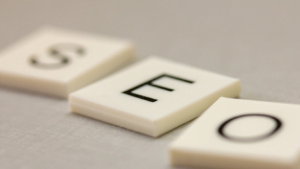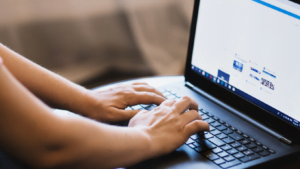What Size Should a Favicon Be

Source: The New Code
When you open an Internet Explorer or Google Chrome browser tab, do you ever notice the site icon at the top? What if you saved a shortcut to an online page or website? Favicons, or tiny images, are specifically designed for that purpose.
One little finishing touch most people forget when creating a website is the favicon. The minor details in your web design make a huge impression, so don’t undervalue them.
In website design, why is the favicon so important? The purpose of this article is to provide you with some insights into its importance and how to make one!
What is a Favicon Image, and What Size Should it Be?
In web browsers, a favicon represents the website or page on a website in a small, 16×16 pixel image. They are commonly displayed on tabs at the top of a web browser, but they can also be found alongside the URLs of pages in search results, as well as on the bookmark bar and history of your browser.
A favicon may even appear on your browser’s homepage, such as on Google Chrome. By creating a favicon for your website, you are creating a visual identifier for your users to recognize your website easily.
The Importance of Favicons
Favicons are small, but they can significantly impact your website’s appearance, branding, and user experience.
Using favicons makes your website more memorable to your users, enhancing your user experience. As a favicon helps users locate your website more memorable, enhancing your user experience. Using favicons makes your website more memorable, enhancing your user experience. Users may also improve the user experience by using favicons on mobile devices. Favicons play a crucial role in mobile web design.
Furthermore, paying attention to even the most minor details when creating a cohesive brand is essential. Your favicon extends your brand’s language outside your website, stamping it there with its small size. Additionally, favicons enhance the legitimacy and professionalism of your site, making it more appealiAlthoughthat favicons have no bearing on the security of your site, users seem to be more likely to trust sites associated with a favicon anecdotally. Users are placed on your site when they see them, whether they found you through a branded or non-branded search engine.
Favicons and SEO
A site’s favicon doesn’t directly affect its search engine optimisation. Nevertheless, favicons help browsers identify your site easier and improve the overall user experience. They can naturally boost your ranking in search engines.
Favicon Sizes
Speaking of different sizes and purposes, there are several commonly used sizes for favicons and their unique purposes. For browser favicons, it should16×16. This is an optimal size. 32×32, however, is the size of taskbar shortcut icons. 96×96 is the size of desktop shortcut icons, while 180×180 is recommended for Apple touch icons. For Squarespace, it can exceed 300×300, while WordPress may require 512×512.
How to Make a Favicon
Now that you know what a favicon is and what the standard sizes are, it’s time to make your own. As a recommendation, you should try to take your company logo and turn it into your favicon. If you do not want to, at least base your favicon on your logo. This will not only help make it more consistent with your branding but also make it recognisable at a glance when browsers are searching for your website.
It is easier than ever to design a logo or find a designer to create one for you. Many designers offer services on collaboration platforms, like Logo Crisp. A designer will work with you to create a perfect logo at a worthy cost! Once you’re satisfied with your logo, it’s time to craft a favicon. You may use a favicon generator, Adobe Photoshop, or any other ICO-making tool online. It is pertinent to note that the standard for favicons is ICO format as it is compatible with all browsers, so it is highly recommended! You may also have it in PNG format, however.
Conclusion
The favicon plays an essential role in the design of a website. By adding them to your site, you can make your visitors feel more comfortable, strengthen your brand identity, and increase your site’s credibility. Ensure not to overlook them – especially if they’re easy to add to your site!
Frequently Asked Questions
What is the purpose of a favicon?
The favicon is the small icon in the corner of a website that can be customized. It is often used to provide a personal touch to websites.
Favicons are mainly used as a way to simplify navigation on websites, but they can also be used as a branding tool for companies. They can also be customized as an attention grabber or even as an icon for social media accounts.
What are some examples of favicons?
The most popular favicons are those of Facebook and Twitter. However, there are many different types of favicons like those for iOS and Android apps, websites, email clients, and more. Some other examples of favicons are Facebook’s iconic “f” logo, Twitter’s bird logo, Google’s iconic “G”, Microsoft’s Windows logo, Yahoo!’s classic “Y”, and Amazon’s smiley face logo.
What does a favicon look like?
A favicon is a small image that is displayed next to the URL in your browser. It can be used to identify the site you’re on and make it easier for users to navigate.
What is a good favicon size?
Favicons should be 16×16 pixels in size. They appear in your browser’s address bar, bookmarks list, and bookmark tabs. To make your favicon more helpful, you should create multiple sizes. Rather than seeing the 16×16 version stretched out on larger screens, you will see an adequately scaled version. High-resolution screens should use 32×32 pixels.
Can I use a PNG as a favicon?
Depending on the web browser, a favicon can be a PNG, GIF, or ICO file. Since ICO files are compact and supported by all major browsers, they are used more frequently than others. Most mobile devices, however, use PNGs, including Android, iOS, and Windows 10.
How do I create a favicon?
You can use any graphics editor to create your favicon, but it’s recommended that you save your file as a .ico file. Alternatively, there are many sources of free, open-source icons which you can select and customize to your own needs. You may also outsource from legitimate graphic designers.
What are some other uses of a favicon?
A favicon or favicon.ico is a small image file displayed in the address bar of a web browser when someone visits your website. It is used not only for aesthetic purposes but also to provide extra information on the website’s content and links.
A small icon can be used as an avatar or profile picture on social media websites like Facebook, Instagram, and Twitter. A favicon can be used as a link on any webpage with some text, such as in an email signature or blog post. Furthermore, the analytics tool Google Tag Manager uses a favicon to track clicks on your website’s links without having to download a file.




